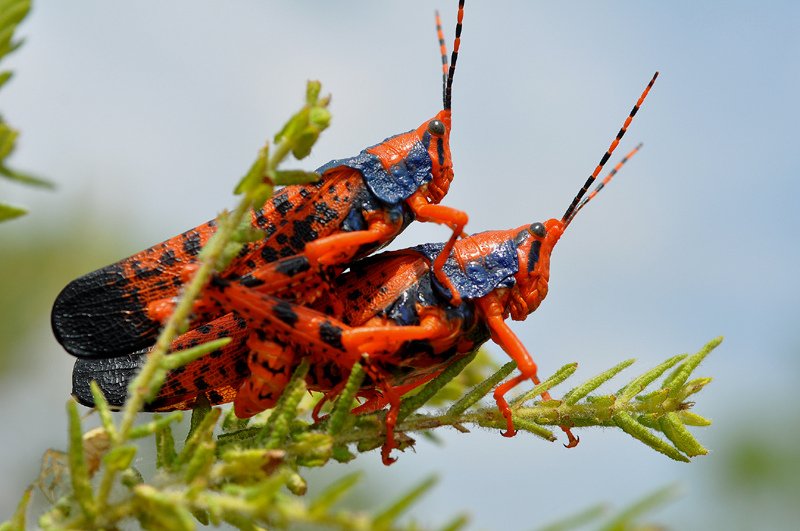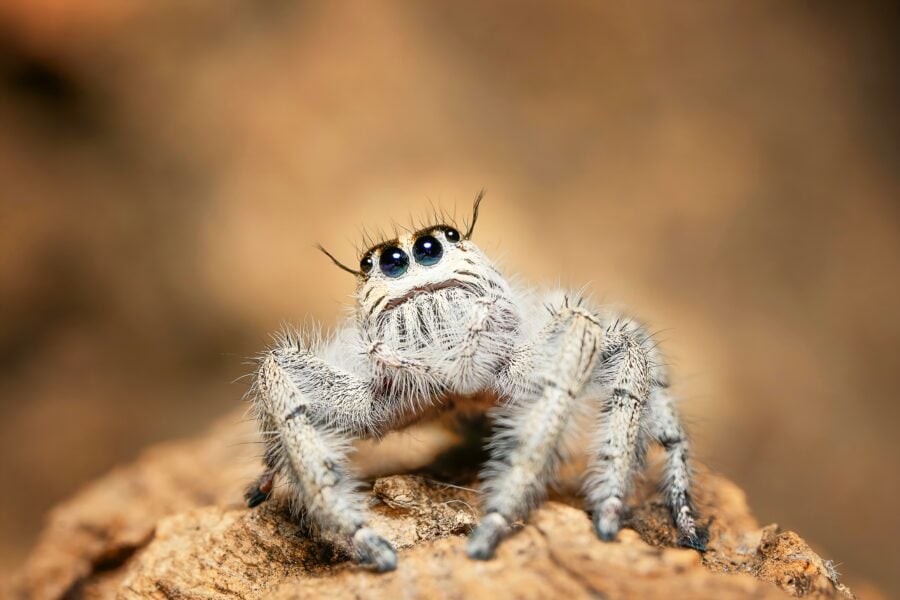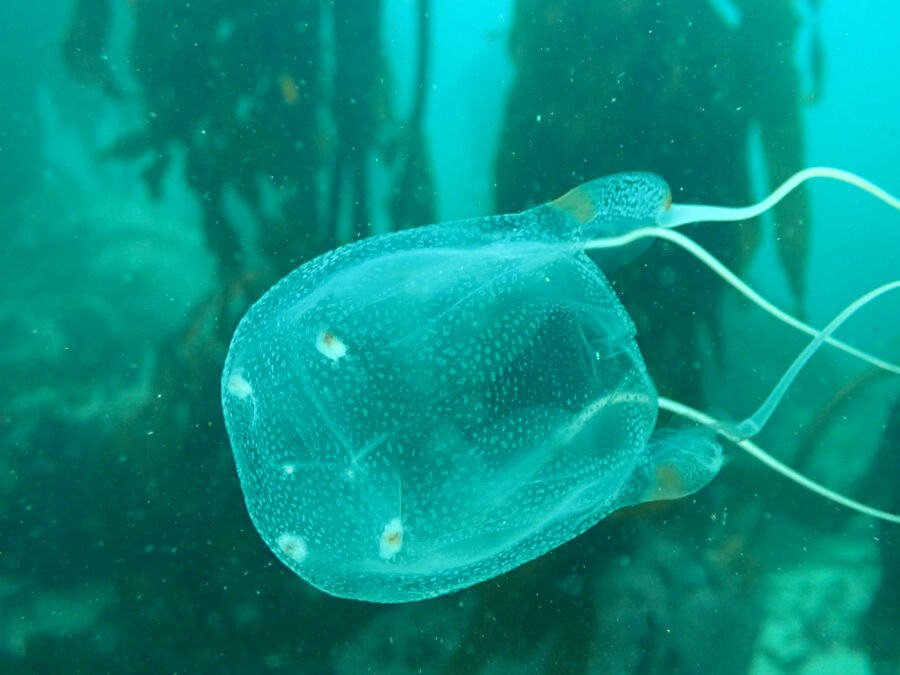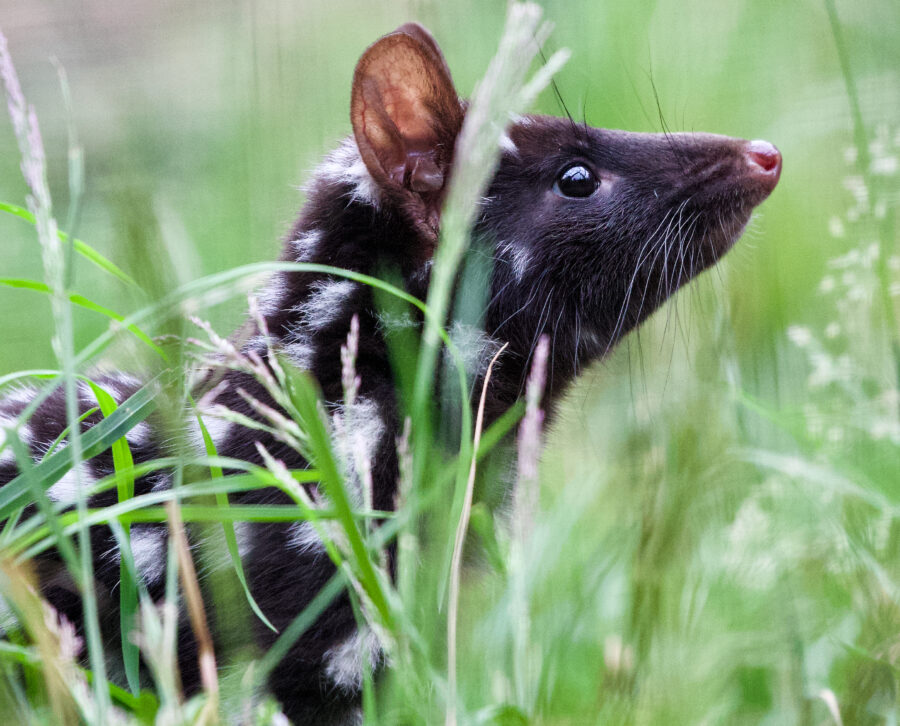Leichhardt’s grasshopper: a rare beauty

Bec Crew
Bec Crew

In the mid-19th century, German naturalist and explorer, Ludwig Leichhardt, traversed the unforgiving terrain of central and northern Australia to complete one of the longest overland journeys in the history of Australian exploration. Before disappearing somewhere in the Great Sandy Desert at the age of 35 he discovered one of our most amazing native grasshopper species, the beautiful Leichhardt’s grasshopper (Petasida ephippigera).
Leichhardt found the species in 1845 near Deaf Adder Creek, which runs off the South Alligator River on the Northern Territory’s Arnhem Land plateau. Describing its “bright brick colour dotted with blue”, Leichhardt reported finding the grasshopper here in great numbers, but between this sighting and the early 1900s, only two more specimens were discovered, each many years apart. And then, just like its namesake, the species disappeared without a trace.
Leichhardt’s grasshopper rediscovered
Seventy years passed before Leichhardt’s grasshopper was officially ‘rediscovered’ in 1971 by Principal Research Scientist of CSIRO’s Division of Wildlife Research, J. H. Calaby. Calaby had returned to South Alligator River, now protected within Kakadu National Park, to spot a single male nymph on a sandstone pediment. While Calaby’s find meant that the species was not extinct after all, it remains particularly rare and little studied, with just a few fragile populations sustained by three native species of flowering shrub within the Kakadu and Keep River National Parks.
Bright colouring in insects usually signifies some level of toxicity, as does this species’ tendency to spew a brownish liquid when agitated, but chemical analysis has turned up little evidence that these grasshoppers are harbouring any toxic compounds. And weirdly enough, the species has no known vertebrate predators, which suggests that rather than being toxic, the brownish spew’s purpose is simply to taste awful. Classic spew.
In 1996, chemists William Kitching and Mary Fletcher from the University of Queensland analysed the species’ host plants to find certain compounds that are associated with bitter-tasting glycoside sugar groups, so they suggested that by feeding on these plants exclusively, the species cements its reputation as a terrible meal.




